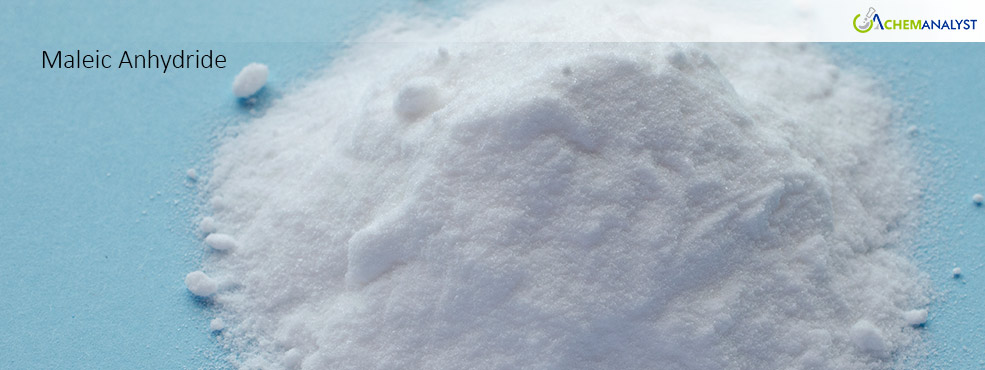Maleic Anhydride Prices Drives Differently in Early 2025: Stability in Germany, Decline in US & China
- 15-Jan-2025 5:45 PM
- Journalist: Jacob Kutchner
The Maleic Anhydride market in early January 2025 exhibited varied trends across key regions, influenced by both demand and supply-side factors. While Germany saw price stability, the USA and China experienced price declines due to shifts in industrial production and changing supply chain dynamics. Despite fluctuations, the overall market remained resilient, although the outlook remained cautious due to ongoing economic uncertainties.
In Germany, Maleic Anhydride prices remained stable during the week ending January 3rd, supported by a balanced supply-demand situation. Seasonal demand followed typical patterns, with industrial production, particularly in the automotive and construction sectors, continuing at a steady pace. Efficient production capacities and stable inventory levels ensured that supply met demand without causing significant price movements for Maleic Anhydride. The supply chain operated smoothly, as port congestion eased, and logistical operations returned to normal after holiday closures. However, with ongoing economic pressures, including weak growth in the European construction sector and challenges in the automotive industry, the market was expected to remain stable, with slight fluctuations depending on seasonal demands and cost pressures.
In the USA, Maleic Anhydride prices declined during the same period, primarily due to a post-holiday slowdown in downstream demand. This slowdown led to reduced market activity as businesses adjusted inventory levels. Increased production capacity and lower raw material costs allowed producers to lower their prices to maintain competitiveness. Additionally, ongoing economic uncertainties and a contraction in US manufacturing activity in December 2024, characterized by weaker export demand and declining new orders, contributed to reduced demand for Maleic Anhydride. Despite the current downturn, analysts remained cautiously optimistic about a potential market recovery in the second quarter, supported by easing inflationary pressures and recovering demand from key sectors such as automotive and construction.
In China, Maleic Anhydride prices also saw a slight decline in early January. The post-holiday slowdown, influenced by the Chinese New Year and weak economic sentiment, resulted in reduced demand from key industries such as unsaturated polyester resins, coatings, and agricultural chemicals. Increased Maleic Anhydride production capacity and competition among producers, coupled with declining raw material costs, particularly for n-butane, led to an oversupply in the market. While supply remained ample, weak economic sentiment and cautious purchasing behavior from downstream consumers kept demand subdued. Analysts noted that the market was likely to consolidate, with limited demand growth expected in the short term.
Looking ahead, the Maleic Anhydride market outlook remains cautious. Supply-side factors, such as stable inventories and production capacities, are expected to ease Maleic Anhydride price pressures. However, continued economic uncertainties, along with challenges in key sectors like construction and automotive, are likely to limit demand growth. Maleic Anhydride prices are expected to fluctuate slightly in the short term, with potential upward movement as seasonal demand in Europe and Asia increases in the spring.



